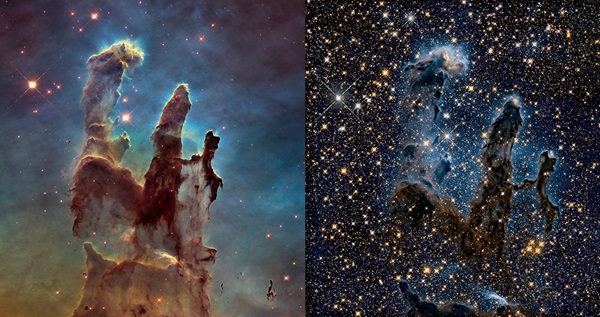A starry night in the Pillars of Creation – Astronomy Magazine
These two views of the Pillars of Creation show the difference that observing a target through various wavelengths can make. The visible light view (left) misses many stars in and around the pillars that are shrouded by dust. However, stars are plentiful in the infrared view (right) because infrared light effectively cuts through interstellar gas and dust.
NASA/ESA/Hubble and the Hubble Heritage Team
The light of the surrounding stars, some just stellar infants, stands out in this infrared view. In the more iconic visible-light shots of The Pillars of Creation, however, the stars are far and few between, as they are largely veiled by dust.
By looking at the Pillars of Creation in a new light, the stars that are normally hidden suddenly pop. This is especially true for the bright, young stars at the top of the pillars, which were previously hidden in Hubble’s visible-light shot. The infrared view also highlights where the cosmic gas and dust are extremely thick, still managing to mask the dust-penetrating infrared light emitted from stars within.






